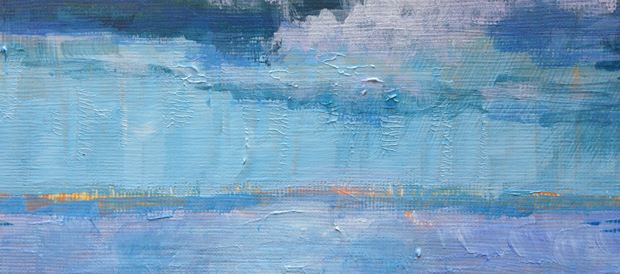I’ve been promising myself for several years to get back to doing some painting. Recently I got myself some acrylic colours and some brushes and have been taking a stab at it. I painted a lot as a teen and into my early twenties, but eventually cast it aside. I was never as good a painter as I wanted to be, and began to see it as a frivolous activity. I was in a hurry to make something of myself, and painting wasn’t going to get me there.
I was half right. I’m pretty sure I wasn’t cut out to be an artist, but what I didn’t recognize were the benefits conferred by the act of creating art, any art, no matter the perceived quality. Making visual art helps you see. It helps you observe and understand. I like to paint from life, mostly landscapes. I don’t try to copy what I see exactly – I have a camera for that. Instead I try to capture an impression of the scene and the light, especially the light. To do that, I have to observe what I think I’m seeing and try to understand the colours, shadows and highlights. It’s really hard, and I usually make a mess of it. Once in a while it will work out kind of well, and that of course is what keeps me trying.
Regardless of whether I ever create a painting I can be proud of, the sharpening of my eye and the practice of visual understanding is immensely rewarding. I’m constantly looking at my surroundings with a more painterly eye now, seeing beauty in unexpected places. As a designer, I know I already had pretty sharp observational skills. Designers have to have them. But those are domain-specific, and they help me do my job. My designer observations are less attuned to catching the fact that spring water running along an iron oxide stained rock face is reflecting a brilliant blue sky. That kind of observation has the power to delight. In the next while I’ll be working on ways to bring more of that into my design work.

